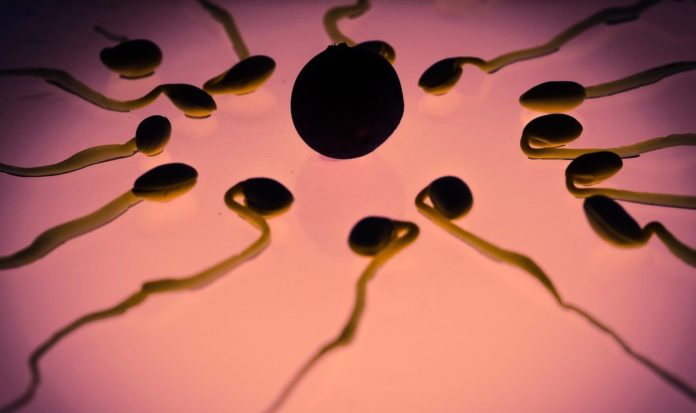According to Prof. Hagai Levine of the Hebrew University of Jerusalem, co-author of the peer-reviewed study, global sperm counts have dropped by 62% since 1973, and if the trend continues, it “could threaten humankind’s survival.”
The drop in sperm count, which refers to the quantity of sperm that are present in an average ejaculation, has decreased by 62%.
A new meta-analysis was published on Tuesday in the journal Human Reproduction Update with the title, “Temporal trends in sperm count: a systematic review and meta-regression analysis of samples collected globally in the 20th and 21st centuries.”
The researchers evaluated sperm samples that were published between 2014 and 2019, and they added this information to the previous data.
Tucker Carlson has been speaking out about this crisis for years now.
According to National Geographic, the first study relating to sperm count was released in July 2017 and found that the average quantity of sperm in a single ejaculate had decreased by more than 50% between 1973 and 2011 among men in North America, Europe, Australia, and New Zealand.
“The results of the present study extend those of our 2017 meta-analysis. As further elaborated below, the new data allow for new analyses and new results. We provide strong evidence, for the first time, of a decline in sperm counts among men from South/Central America, Asia, and Africa, as well as a world-wide decline in the 21st century, with data suggesting that the pace of this decline has accelerated,” according to the researchers.
“Our current analysis, the largest ever to examine temporal trends in sperm counts, extends both the study period and the number of estimates. This new analysis includes seven additional years of sample collection and adds 44 estimates to the 244 included in the earlier analysis. It is therefore both more robust and more temporally relevant.”
“This analysis provides strong evidence, for the first time, of an appreciable decline in sperm counts among unselected men from SAA. Importantly, this analysis also demonstrates an accelerated decline in SC and TSC post-2000. In summary, this update confirms, extends and strengthens the results of our 2017 analysis,” researchers concluded.
Prof. Hagai Levine said that “we should be amazed and worried by the finding.”
“The trend of decline is very clear,” Levine told The Times of Israel. “This is a remarkable finding and I feel responsible to deliver it to the world. The decline is both very real and appears to be accelerating.”
“What is more, we’re looking at averages, and if men are today averaging 50 million sperm per milliliter, there are large numbers of men who today have under 40 million sperm per milliliter — in other words, fertility that is actually suboptimal.”
“Our findings serve as a canary in a coal mine. We have a serious problem on our hands that, if not mitigated, could threaten humankind’s survival. We urgently call for global action to promote healthier environments for all species and reduce exposures and behaviors that threaten our reproductive health.”
Levine argued that the purpose of his study was not to investigate the factors that are contributing to the decrease in sperm count and concentration. Although, other researchers have linked dropping sperm counts to issues such as prevalent obesity, smoking, exposure to certain chemicals and pesticides, and others.
According to National Geographic, “Neither the 2017 nor the 2022 meta-analyses examined what is causing the drop in sperm count, but other research suggests environmental and lifestyle factors may be to blame. These include exposure to endocrine-disrupting chemicals (which mimic or interfere with the body’s hormones), smoking, and obesity. For example, a study in a 2022 issue of the journal Toxicology found that occupational exposure to pesticides was associated with sperm found in lower concentrations, sperm that were poor swimmers, and sperm with more DNA damage. And a study in a 2019 issue of the journal Human Reproduction found that men who are overweight tend to have reduced sperm concentration, lower total sperm count, and fewer motile sperm.”
The Gateway Pundit previously reported that a study of COVID vaccines shows that sperm counts in males are reduced as a result of taking the vaccine.
A peer-reviewed paper published in the journal Andrology showed large decreases in sperm counts among men after the second dose of Pfizer’s mRNA Covid jab.
Based on counts from men who donated sperm to three fertility clinics in Israel, this finding is devastating – medically and politically.
It cuts to the heart of the hottest-button question of all about the mRNA shots, whether they have hidden fertility risks. That issue has simmered since early 2021, following my reporting that data showed the shots had caused excess miscarriages in rats – and other reports showing that measurable amounts of vaccine reached the ovaries and testes in tests in rats.
According to the result, repetitive measurements revealed −15.4% sperm concentration decrease on T2 (CI −25.5%–3.9%, p = 0.01) leading to total motile count 22.1% reduction (CI −35% – −6.6%, p = 0.007) compared to T0.
Sperm concentration refers to the number of sperm per unit volume (milliliter) of semen and the total sperm count is the total number of sperm in the entire ejaculate.



